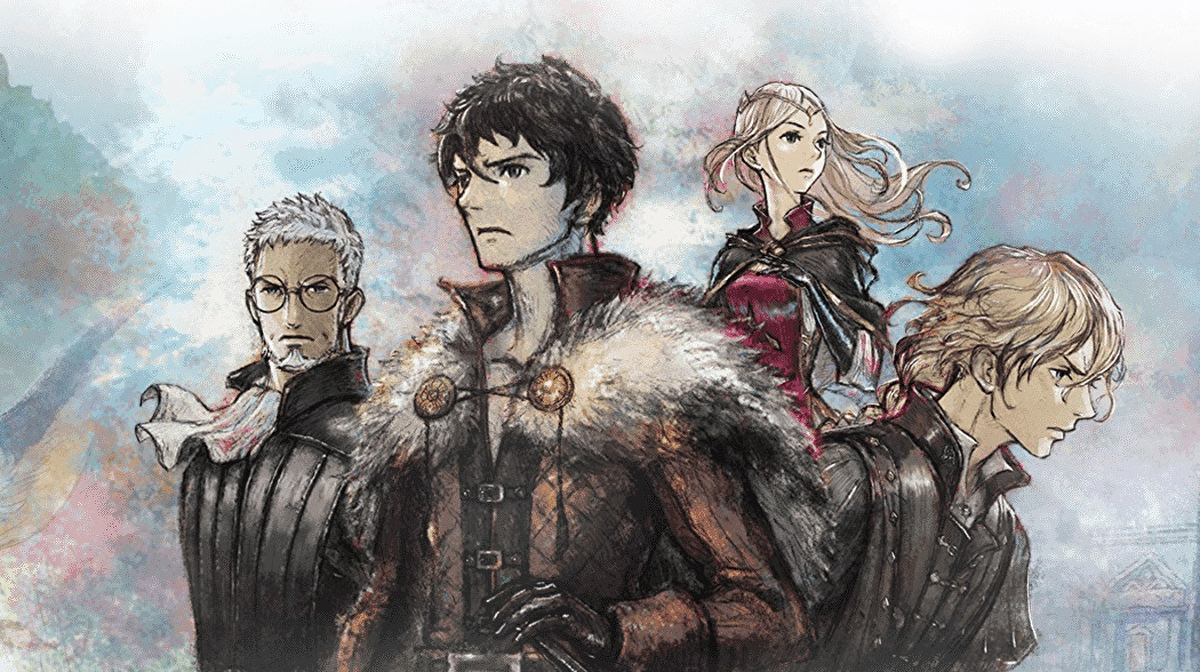
Square Enix is absolutely no stranger to JRPGs or tactical RPGs, and development lead Tomoya Asano isn’t either, fronting the creation of titles like Bravely Default and Octopath Traveler. Both of those series have also established a new, charming art style in gaming that has been labeled “HD-2D”, combining the old school sprite centered character design of games of yesteryear with 3D environments, cameras, and dynamics. The whole aesthetic creates experiences that are kind of like living pop-up books.
The newest game to use this proven triangle of success – Square, Asano, and HD-2D – is the aptly and bluntly named Triangle Strategy. The game is a wonderful look at the potential of the HD-2D style and a great foray into turn-based tactical RPGs not named Final Fantasy Tactics or Fire Emblem. The story and gameplay of Triangle Strategy are true treasures if you can wade through the often uninviting pace of the game. Not bad for a game with a completely uninteresting and non-indicative name.
The game takes place on the continent of Norzelia, where the three nations of Aesfrost, Glenbrook, and Hyzante are thirty years removed from a conflict known as The Saltiron War, where the nations of Aesfrost and Hyzante were at odds over – you’ll never guess – salt and iron.

The merchant nation of Glenbrook mediated the conflict and ended it by helping the three nations reach an unsteady peace through the discovery of new reserves of resources. The current story mostly follows the prominent figures of Serenoa, Roland, and Benedict from the most powerful families of Glenbrook, as well as Serenoa’s arranged marriage fiance Frederica, a princess from Aesfrost.
As with nearly any world built on fantasy warfare that introduces the player to a time of stilted peace, said ceasefire does not last. It isn’t long before the heavily militarized nation of Aesfrost takes advantage of Glenbrook’s generosity and begins another war that soon drags the religious state of Hyzante back into it. The player has to lead Serenoa, who is named a lord shortly before the conflict breaks out, and his colleagues through the complex and treacherous waters of warfare and peace between nations.
A huge theme of Triangle Strategy seems to be what it actually means to be a leader. The game’s core mechanic when it comes to deciding how things should go actually involves decisions from other members of your team. However, it gives you the option to try and sway your comrades to whichever side you wish through something called the “conviction” system.
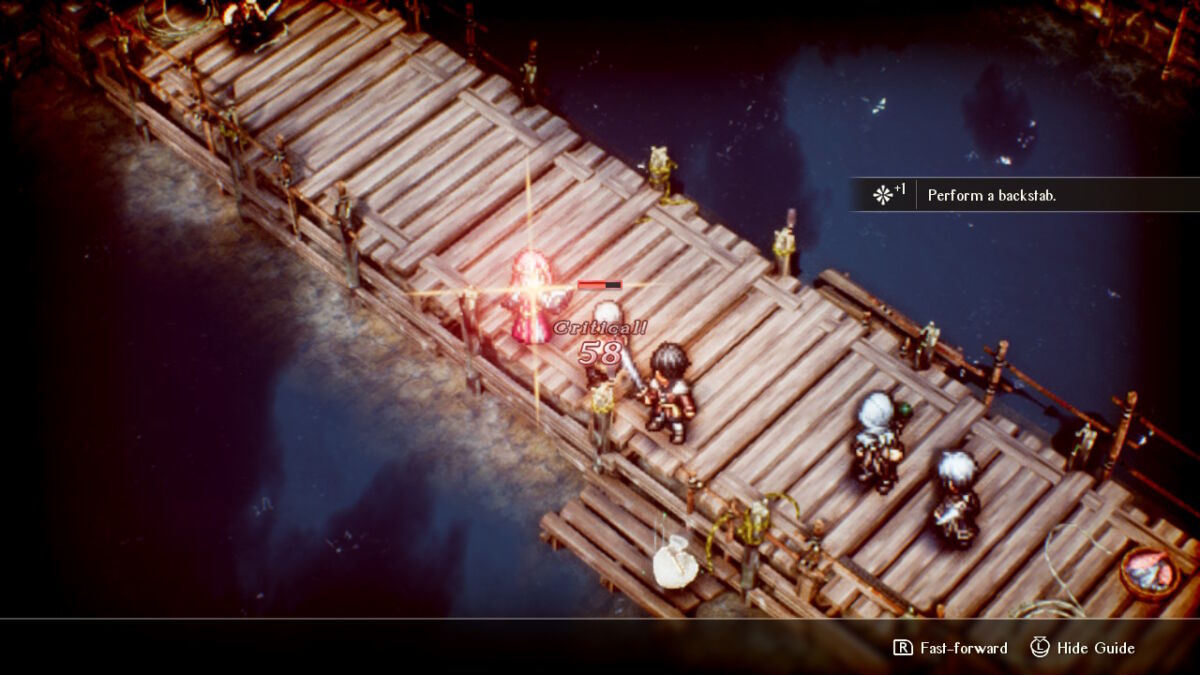
Almost every decision you make, on or off the battlefield, raises conviction with other characters, allowing you more sway in their negotiation processes, as well as dictating which of the game’s many paths Glenbrook will go down to attain peace once more. Luckily, unlike the most dominant name in the genre, Fire Emblem, there is no permadeath, meaning you’ll never lose characters to the unpredictability of combat.
As you can maybe tell from that main theme and premise, the game is heavy on the political nature of warfare in fantasy. An overwhelming amount of works in the genre have focused on some kind of war or emerging conflict, and while Triangle is no different, it certainly comes from a different perspective than most, especially when you realize it’s impossible to please everyone in your party with the build-up of the decisions you make.
But if you’re going to have a tactical RPG, that “tactical” part better be smooth and Triangle Strategy certainly aces this. For starters, while the battlefields are small, especially in relation to other games in the genre, they make up for their lack of surface area with verticality. Positioning and levels are at the core of Triangle’s grid system, with the direction you or your enemy is facing having as much of an impact on things as what plane they’re standing on.
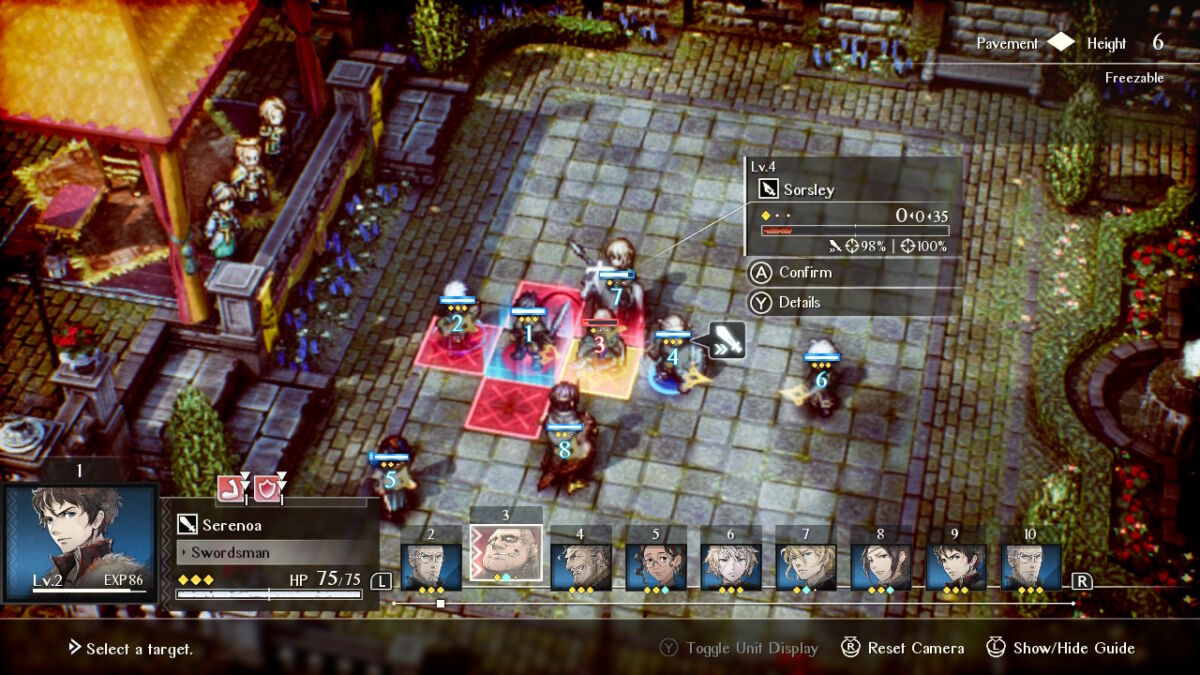
From small enough elevation like standing on a crate or a flower bed all the way to finding (or creating, as you discover) a ladder to climb and shoot from a castle wall, the vertical depth of the war zones present a cool prospect to combat in a pop-up book setting. These features create an awesome layer of depth, both literally and figuratively. Also, when cornering an enemy unit on opposite sides, you’re able to basically ping-pong them between yourself and your well-positioned ally, making for an immensely satisfying payoff for good stratagems.
This is all complimented by the fact that you usually get to stroll through and scope out battlefields in story-driven sessions before you even get to battle on them. During these strolls, the entire future battlefield is yours to scout and traverse, down to checking the places of elevation (or a secret passage or two) that you will undoubtedly need to know about. Just be sure to pay attention when you have to do something like check on guests at a party or investigate a mine because sometime soon, you will be fighting there.
To go along with this, the characters and their roles in combat are truly unique to each unit, making development and deployment a genuine strategy in and of itself. While the game does boast a potential 30+ characters you can recruit and use, because they’re recruited through the influences of the conviction system, there’s no way you’re getting them all on your side on a first playthrough.

While a few characters might use the same weapons or spells, they’re distinct enough from each other that no one really becomes redundant; it truly becomes up to the player who they wish to invest in. An added layer is also trying to decide who to get closer to, as battles fought alongside each character raises their conviction with you, possibly unlocking other side stories that lead to other characters or special items down the road.
My favorite, though, might be the fact that a few recruitable characters come from several no-name NPCs you’d traditionally ignore not just in Tactical RPGs, but games of any genre. With enough conviction and influence, NPCs like your barmaiden and blacksmith can gain names, classes, and stats and follow their lord into battle with unique styles.
Triangle Strategy has loads of fun characters, environments, combat, and an incredibly interactive narrative. Where exactly does it fall short?
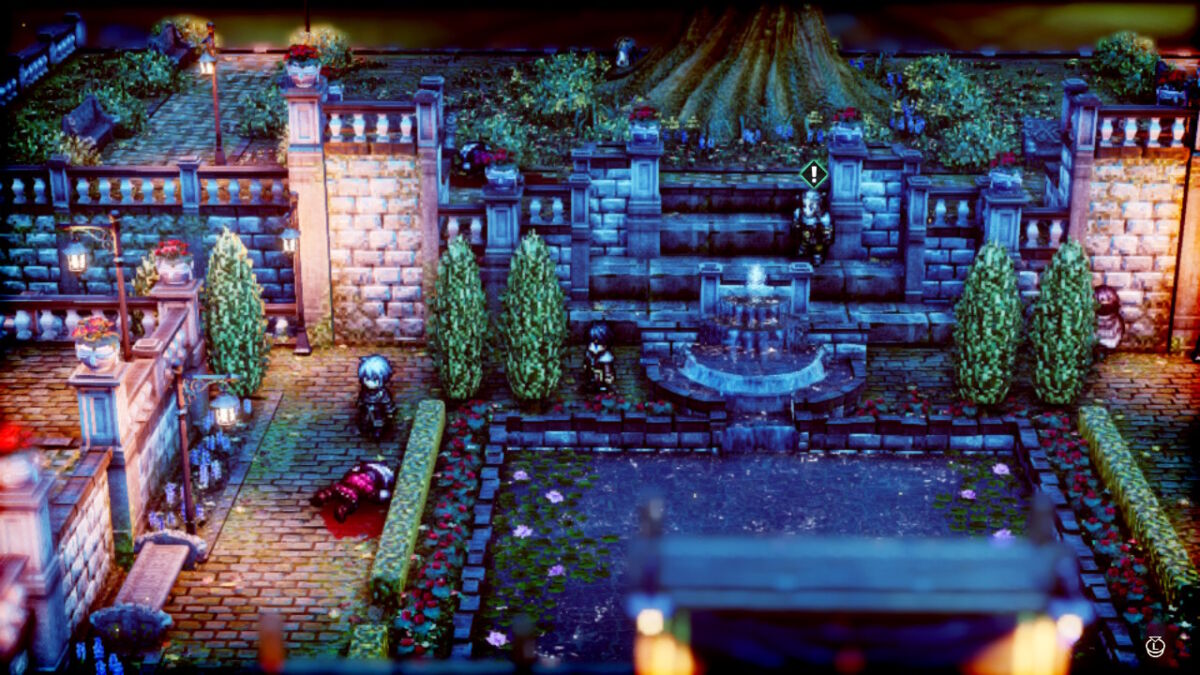
One word: pacing. I have never seen a game kill its own momentum as badly or as frequently as Triangle Strategy seems to love to. For every awesomely fun battle the game pulls you into, it destroys the engagement by locking you into unavoidable cutscenes and menus for the next hour.
The lengthy demo of the game lasts all the way through the first three chapters, which can take forever because of how much the game start-stops. It truly may have the worst narrative pacing of any big JRPG title in recent memory, as it’s entirely possible to have a playthrough last 40-50 hours and have almost a third of that taken up by everything between battles.
The game falls into the fantasy storytelling sin of spending much of the early game just dumping mountains of exposition and names on you as if any of them are going to stick. They find a way to stick later, but that’s mostly due to organic storytelling and context – which would also be a great way to tell this same exposition.

Lately, I’ve found myself getting less and less patient when it comes to fantasy stories taking so long to set up their world and world conflicts — this game did not reverse those habits. Pair that with the long cutscenes and empty time between fights, and it didn’t take long for me to almost stop caring about the world’s dense political conflict completely. Also not helping is the fact that all this hatred and strife comes from, essentially, a violated trade treaty. Despite how close to real life that may be, it sort of dampers the stakes of everything from the start.
What makes the unskippable exposition and cutscenes feel even longer, however, is the incredibly stilted voice acting. Almost every character speaks in the same style and meter that at the best of times possesses a modicum of emotional variance and at the worst of times feels like high schoolers reading aloud Shakespeare for the first time. It truly is a labor to get through, although this is a criticism more for the vocal director than the voice actors, who I always want to give the benefit of the doubt, especially when it’s as widespread a problem as this is.
As for the characters themselves, they’re caught in a weird place. While the game clearly establishes very early that it isn’t like Fire Emblem, for good or ill, this leads to the characters feeling like they don’t exist outside of battle. In the FE games, maybe my favorite thing is to have the characters interact with one another like regular people, sharing thoughts and feelings beyond trying to kill things, and in the games that allow it, watching them fall in love.
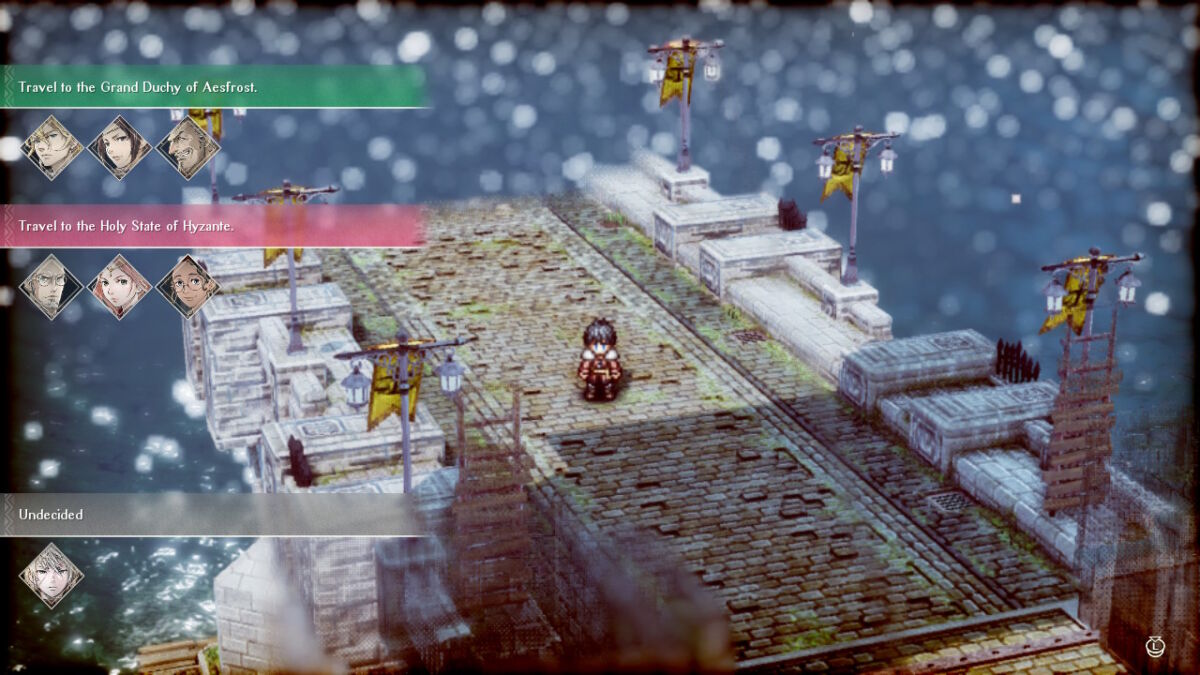
This is sort of absent from Triangle Strategy, where there are side stories, but the game’s political conflict has such an iron grip on everything about the narrative and all the characters’ lives, it feels like no one is their own person outside of combat or nothing but motivations disguised as people during negotiations. It’s a real shame because all the character designs are fantastic and give the player even more of a reason to want to get to know everyone.
On occasion, when you recruit a new character, you’ll get a little scene about their motivations that shows how much potential and depth every character had from possibly delving into their personal lives further, but they’re soon cast to the wayside or forgotten, especially if they’re not nobility. This feels like a huge missed opportunity, especially with conviction being as important to the game as it is. Nothing gives you an edge in negotiation like knowing exactly how your friends think and feel.
The last great frustration is how players get to their ending. With at least four different paths to go down, it’s great that all of them have some sort of cliffhanger or sense of dissatisfaction that lets you know everything isn’t okay and maybe you could’ve made better choices. However, there isn’t much of a way to see which route you’re on in your first playthrough.

The conviction mechanic sort of scores points in the background and tallies your choices and then presents you with options that might go against what you truly believe because your choices have kind of cornered you. On New Game+, you can see these points, presumably so you can get to all the endings you haven’t seen.
This, however, leads to a huge golden path fallacy if you want to get to the golden ending, where you sort of have to get a certain number of points towards every ending in hopes of activating it. This means in terms of storytelling, the “best” path leaves Serenoa and the player, ironically, completely devoid of real conviction.
Though I went pretty hard on the negatives, when Triangle Strategy isn’t actively fighting to kill off your drive to play it, it actually is pretty marvelous. The combat is fun, especially when you get over the learning curve, the characters and aesthetics are vibrant and full of charm, and even the music is full of lowkey jams I didn’t realize I loved until I found myself humming them later. It’s just a little saddening that the same areas that contain the game’s best features also contain the parts they clearly could’ve done better.
There’s so much to love about this game, even with the unbearable pacing and uninspiring name. It sort of goes in hand with the game’s theme of leadership. Do you trust yourself to be able to get through the bad times to make it through the fantastic game on the other side? Make no mistake, others may have a say, but in the end, you have to make the decision and make the (relatively easy) choice to give this game a chance.
A code for Triangle Strategy was provided by PR for the purposes of this review.
READ MORE: 15 Best Switch Strategy Games
Some of the coverage you find on Cultured Vultures contains affiliate links, which provide us with small commissions based on purchases made from visiting our site.

